Your Curated Tumblr Experience Awaits!
Black History - Blog Posts
The Soul Genocide is what I call the historical systematic killings of black people and destruction of black lives
happy black history month 🟥⬛️🟩


TJ: For Y’all shitting on his name
I’m actually pretty damn proud of Luke Mullen in his choosing of TJ’s name.
Jagger of course after Mick Jagger. Jagger was of course the lead singer for The Rolling Stones and an overall iconic rockstar. He was known for his gender non-conforming stage persona in the 70s. He experimented with Glam Rock fashion, and makeup, and had quite the extravagant stage-presence. Jagger is notoriously bisexual and has been with many men and women in his time, including Princess Margaret and David Bowie.
Thelonious is most likely after Thelonious Monk, a Black Pianist and a prominent jazz artist from Harlem. He was known for his fantastic improvisation skills and compositions. He was an active jazz artist for nearly 40 years and was in a quartet with John Coltrane. Monk was also a victim of Police Brutality like many Black men in America. In 1958, on his way to a gig, where he was pulled over by police officers. When he refused to answer their questions, he was beat unconscious with a club-like weapon known as a Blackjack. Monk also suffered from severe mental illness that was misdiagnosed several times, he was put on narcotics, lithium, and other hard medications to try to ‘fix him’. Monk died in 1982 to a stroke.
So I’m proud of Luke’s picks, having TJ named after a gender non-conforming bisexual rock star and a mentally ill strong black man.
And here comes another poem.
Here's the other poem I wrote for my black history school assembly.
Unforgettable
We will never forget our brothers,
Malcolm, Martin, and Medger.
And we will never disregard our sisters,
Fannie, Shirley, and Ruby.
We will not forget the anger and hate that was thrust upon Rodney and Emmett.
We will remember the strength of Mamie Till to show the world what happened to her boy.
We will remember Rodney asking the Nation, ”Can we get along?”
We won’t forget the bravery of the Little Rock Nine or the patience of the Greensboro Four.
We will remember the boycotts and the protests,
Along with the dogs and water hoses.
We will not forget the people from the past,
Who wouldn’t give up and fought for their rights. For even those who were not in the spotlight,
Still shine like diamonds.
For they showed courage and determination,
In a time of fear and discrimination.
So let us never erase these people from our memory,
For each and every one of them is unforgettable.
I know, somehow, that only when it is dark enough can you see the stars. -Martin Luther King
Here's a Poem I wrote a year ago
(would've been good to post this in February, but I didn't give a crap about tumblr in February so this is what I'm doing)
What I am is smart and kind.
What you are is ignorant and blind.
What I am is black and beautiful.
What you are is vile and unhelpful.
It's not my fault that you hate me so.
Just because my skin is not the color of winter snow.
It's not my fault you will stoop so low.
So, I will walk on as calmly, as the summer wind blows.
Don't you see it's not important where you come from?
What matters is if you treat people like scum!
So, you can keep talking and thinking the way that you do.
But don't be surprised when karma comes to have a chat, with you.
(I know it's not that good, but I wrote this when I was 13 for a black history assembly we did at my school and it's really the first piece of poetry I did that wasn't god-awful)
Help me save my family's life
Hello, I am Abdallah al swusiis ,l am from in the north of Gaza Strip. Despite my feeling of shame, I am writing this letter and appeal after hesitation and confusion.
Fear forced me to tell you that I have been living through a genocidal war for more than 11months. Many times I stayed with my family after the destruction of our home and the martyrdom of my relatives, as we suffered from hunger, poverty, and lack of the minimum necessities of life, and we fled to many places. I am still afraid of losing any member of my family during the journey of displacement and suffering. There is no safety anywhere in Gaza. We have lost everything, our health, our dreams, our future, our ordinary life. I never expected in my entire life to ask for something like this or financial assistance from anyone, but the current situation Disastrous and crazy, as my family and I need this money to escape this nightmare and cross the border at a cost of approximately $49,200 in lives. Now I have no options so I created a GoFundMe link for Your Humanity to support me and my family to survive

This fundraising campaign is a last resort for me to help us escape the war and reunite with the family, finally I am collecting these donations to escape with my family from this war and try to reach safety

Your help and contribution means a lot to us, as it means compassion and solidarity for justice, and any donation from you will enrich our lives.



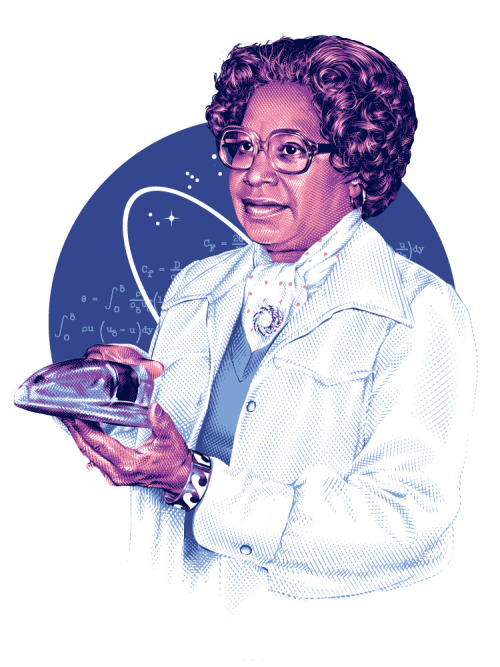
Mary W Jackson by Tracie Ching
April 9, 1921 – February 11, 2005)
Mary Jackson was an American mathematician and aerospace engineer at the National Advisory Committee for Aeronautics, which in 1958 was succeeded by the National Aeronautics and Space Administration. She worked at Langley Research Center in Hampton, Virginia, for most of her career. She started out in the computing unit at the segregated West Area Computing division in 1951. She took advanced engineering classes and, in 1958, became NASA’s first black female engineer.
After 34 years at NASA, Jackson had earned the most senior engineering title available. She realized she could not earn further promotions without becoming a supervisor. She accepted a demotion to become a manager of both the Federal Women’s Program, in the NASA Office of Equal Opportunity Programs and of the Affirmative Action Program. In this role, she worked to influence the hiring and promotion of women in NASA’s science, engineering, and mathematics careers.
Jackson’s story features in the 2016 non-fiction book Hidden Figures: The American Dream and the Untold Story of the Black Women Who Helped Win the Space Race. She is one of the three protagonists in Hidden Figures, the film adaptation released the same year.
In 2019, Jackson was posthumously awarded the Congressional Gold Medal.[2] In 2021, the Washington, D.C. headquarters of NASA was renamed the Mary W. Jackson NASA Headquarters.
“For Mary Jackson, life was a long process of raising one’s expectations.” - Author: Margot Lee Shetterly
LOUDER FOR THE PEOPLE IN THE BACK!!!!!
what a beautiful day to remember that trans people of color exist and deserve better
The Influence of the Akan Language on Jamaican Patois
The Akan language, spoken by the Ashanti and Fante people in Ghana, has had a significant impact on Jamaican Patois, a creole language based on English. This influence stems from the transatlantic slave trade, when Akan speakers were brought to Jamaica. Here’s how Akan shaped Jamaican Patois:
1. Vocabulary
Many Akan words became part of Jamaican Patois. For example:
- "Nyam" (to eat) comes from the Akan word "niam."
- "Unu" (you, plural) is similar to the Akan "mo" or "mona."
- "Aduru" (medicine/herbs) comes from the Akan "aduru."
2. Grammar
Akan influenced the grammatical structure of Patois. For instance:
- The use of double negatives (e.g., "Mi nuh know nutten" – "I don’t know anything") may reflect Akan grammar.
- Certain word orders in Patois also show Akan influence.
3. Culture
Akan cultural concepts and terms, especially in spiritual practices like Obeah, became part of Jamaican traditions.
4. Phonetics
The tonal features and sounds of Akan also shaped the pronunciation of Patois, giving it a distinct African influence.
5. Names and Places
Some Jamaican names, like "Kwame" (meaning "born on Saturday"), come directly from Akan.
In a Nutshell
The Akan language left a lasting mark on Jamaican Patois through vocabulary, grammar, and cultural practices. It’s a powerful reminder of how African heritage continues to shape Caribbean identity and language. 🌍✨





Robert Smalls was an extraordinary figure in American history. Born into slavery on April 5, 1839, in Beaufort, South Carolina, he became a symbol of courage and determination during the Civil War and Reconstruction era.
One of his most remarkable achievements occurred in 1862 when he commandeered a Confederate transport ship, the CSS Planter, in Charleston Harbor. Smalls, along with other enslaved crew members, navigated the ship past Confederate checkpoints and delivered it to Union forces. This daring act not only secured freedom for himself and his family but also provided valuable intelligence and resources to the Union.
After the war, Smalls became a prominent political leader. He served in the South Carolina Legislature and the U.S. House of Representatives, advocating for racial equality, public education, and civil rights. His legacy as a war hero, politician, and advocate for justice continues to inspire.






Ruby Bridges' story is a significant moment in the American Civil Rights Movement. Here's a breakdown of her case:
* Background:
* Ruby Bridges was born on September 8, 1954, in Tylertown, Mississippi.
* Her family moved to New Orleans, Louisiana, seeking better opportunities.
* In 1954, the U.S. Supreme Court ruled in Brown v. Board of Education that racial segregation in public schools was unconstitutional.
* Desegregation:
* In 1960, at the age of six, Ruby Bridges became the first African American child to integrate William Frantz Elementary School, an all-white school in New Orleans.
* She was chosen to attend the school after passing a test administered by the school district.
* Her attendance was met with intense hostility and racism.
* She was escorted to and from school by federal marshals due to threats to her safety.
* Impact:
* Ruby Bridges' courage in the face of adversity became a symbol of the struggle for racial equality.
* Her actions played a crucial role in the desegregation of public schools in the South.
* Her story continues to inspire conversations about race, equality, and the importance of education.
* Legacy:
* Ruby Bridges has become a civil rights activist.
* She has created the Ruby Bridges foundation, to promote tolerance and unity through education.
* Her story has been told in books, movies, and paintings, most notably Norman Rockwell's "The Problem We All Live With."
In essence, Ruby Bridges' case represents a pivotal moment in the fight for civil rights, demonstrating the bravery of a young girl who helped to change the course of American history.
https://www.tumblr.com/join/Gmt0PcxJ
Join me on my page let's have fun together 😄
https://youtu.be/P_XdtAQXnGE?si=UtEeM-Bg6x9zHBVi
In honor of Black History Month, here are 10 Black Americans who were pioneers of their time. (I apologize that this post is late. I’ve been preoccupied with midterm exams)
Eugene Bullard (1895 - 1961)

Eugene Bullard was one of the first African American military pilots in the world. Originally from Georgia, Bullard had run away from home when he was 11 and wondered around the state for six years with a clan of gypsies before stowing away on a German cargo ship in 1912. He ended up in Aberdeen, Scotland and eventually ended up in London, where he worked as a boxer and performer for an entertainment troupe. He traveled to Paris for a boxing match and eventually settled there permanently. When World War 1 began in 1914, Bullard joined the French Foreign Legion, where he saw combat at the Somme, Champaign, and Verdun. After being injured during the Battle of Verdun, he was sent to Lyon to recuperate. After recovering in 1916 he joined the French Air Service as a machine gunner. He obtained his pilot's license in 1917. He flew several missions during the war and claimed two victories over German planes. He applied to join the American Air Corps after the United States entered the war in 1917 but was rejected because of his race. Bullard returned to the French Air Service but was removed after an apparent conflict with a French officer. He remained in the military until 1919. He returned to Paris where he worked a nightclub, operated his own nightclub and gym, and married Marcelle de Straumann. After Germany invaded France in 1940, he volunteered to fight again, but was injured during the defense of Orleans. He escaped to Spain and later returned to the United States, settling in Harlem, New York City. In 1949, he was working as a security guard at concert hosted by Paul Robeson. Riots broke out where a racist mob and police officers beat concert goers, including Bullard. He eventually died of Stomach Cancer in 1961.
Bullard received many honors from France. In 1954, the French government invited Bullard to Paris to be one of the three men chosen to rekindle the everlasting flame at the Tomb of the Unkown Soldier under the Arc de Triomphe. In 1959, he was made a Knight of the National Order of the Legion of Honor. He also received the Military Medal, an award given for courageous acts and the third highest award in France. After his death, he also received honors from the United States. He was posthumously commissioned as a Second Lieutenant in the United States Air Force in 1994. He was inducted into the Georgia Aviation Hall of Fame in 1989 and the National Aviation Hall of Fame in 2022. The Museum of Aviation in Warner Robbins, Georgia erected a statute in honor of Bullard.
Ruby Bridges (1954 - )

Ruby Bridges hadn't even been born yet when, in 1954, the United States Supreme Court made a landmark ruling in the Brown vs. Board of Education case that declared that desegregation in public schools was unconstitutional. This decision caused protests and celebrations all across the South, including New Orleans, Louisiana. In 1960, when Ruby was 6 years old, U.S. Circuit Court Judge ruled that schools in New Orleans must begin desegregation. Ruby was one of four 6-year-old girls (the others being Lenona Tate, Tessie Provost, and Gail Etienne) selected by the NAACP to participate in the integration. Tate, Provost, and Etienne enrolled at McDonogh 19 Elementary School, while Bridges enrolled at William Frantz Elementary School. All four faced death threats, racial slurs, and taunts. After a race riot broke out at Parish School Board meeting, U.S. Marshalls were called in to escort the girls to and from school.
Since the tumultuous period, Bridges has become a symbol of the Civil Rights Movement. She has been the subject of Songs, documentaries, movies, and 1964 Norman Rockwell painting "The Problem We All Live With". She is currently the Chair of the Ruby Bridges Foundation. She has also received numerous accolades over her life including the Presidential Citizens Medal by President Clinton in 2001, being honored as a "Hero Against Racism" by the Anti-Defamation League in 2006 and being inducted in the National Women's Hall of Fame in 2024.
Bessie Coleman (1892 - 1926)

Bessie Coleman was born the tenth child out of thirteen to a family of sharecroppers in Texas. She walked four miles each day to attend a segregated school where she loved reading and established herself as an exceptional math student. Every harvest season she helped her family harvest cotton. When was turned eighteen years old, she enrolled at the Oklahoma Colored Agricultural and Normal University in Langston, Oklahoma (known today as Langston University). She only completed one term before running out of funds and returning home. In 1915, she moved to Chicago to live with brothers where she worked as a manicurist at a barbershop, where she heard flying stories of pilots returning from their service in World War 1. She took a second job as a restaurant manager to save money in the hopes of becoming a pilot herself, but flight schools in the U.S. at the time were not accepting women nor black people. As such, she was encouraged to study abroad by Robert Abbott, publisher of the African American newspaper 'The Chicago Defender'. To do this she received financial backing from the defender and banker Jesse Binga (founder of the first black owned bank in Chicago).
In 1920, she traveled to France to earn her license. She trained on a Nieuport 14 Biplane. In 1921, she received her pilots license, becoming the first black woman (and first black person in general) to receive a license from the Fédération Aéronautique Internationale. She returned to the United States in September becoming a media sensation. She made a living performing in air shows as a stunt flier. She met with community activists and spoke before crowds about perusing aviation as a profession and the goals of black people in the United States. Unfortunately, she was killed in 1926, when the plane she was flying in lost control and threw her out at 2,000ft. Though she never established her own flight school, her ambitions inspired many other black aviators to this very day.
Katherine Johnson (1918 - 2020)

Katherine Johnson was one of the first black to be employed as a scientist at the National Aeronautics and Space Administration. Born in White Sulpher Springs, West Virginia, she was the youngest of four children. Her mother was a teacher, and her father was a lumberjack, farmer, and handyman. From an early age she displayed strong mathematical abilities, so her parents enrolled her in high school in Institute since their home county didn't school for African Americans passed the 8th grade. After graduating high school, she enrolled at West Virginia State College, where took every mathematics course offered (new classes were even added just for her). She graduated 'summa cum laude' in 1937 and took a teaching job Marion, Virginia.
In 1938, the Supreme Court ruled that states that provide higher education for white students must provide it for black students as well. As a result of this, Johnson was selected along with two men to become the first black students to be enrolled at the West Virginia University Graduate School in 1939. However, she left the program to start a family with her husband James Goble. The couple had three daughters: Joylette, Katherine, and Constance.
At a family gathering in 1952, a relative informed her that the National Advisory Committee for Aeronautics (NACA, the precursor to NASA) was hiring mathematicians and that the Langley Research Center was hiring Black applicants as well as white. Johnson took a job at the agency in 1953. She spent 33 years with NACA and NASA, where she earned a reputation as a human computer for mastering complex mathematical calculations and helping pioneer the use of electronic computers. She worked at topics including gust alleviation, flight trajectories, and launch windows. Her work was instrumental to the Apollo Missions during the Cold War 'Space Race'. For her work she was awarded the Presidential Medal of Freedom in 2015, the Silver Snoopy Award and a NASA Group Achievement Award in 2016, and the Congressional Gold Medal in 2019. She was the one of the subjects of the 2016 film Hidden Figures, and she was posthumously inducted into the National Womens Hall of Fame in 2021.
Shirley Chisholm (1924 - 2005)

Shirley Chisholm was the first black woman to be elected to the United States Congress. She was born in Brooklyn to working class parents. Since her mother face difficulty working and raising her children, Shirley and her three younger sisters were to live with their grandmother in Barbados. She said about her grandmother "Granny gave me strength, dignity, and love. I learned from an early age that I was somebody. I didn't need the black revolution to teach me that". She returned to the United States in 1934 and in 1939, began attending the integrated Girl's High School in Brooklyn. She did so well academically, she served as the Vice President of the Junior Arista Honor Society. She attended Brooklyn College where she majored in sociology and graduated in 1946. She married her husband Conrad in 1949. After suffering two miscarriages, the couple learned they could not have children. She worked as a teacher's aide from 1946 to 1953, during which she went on to obtain her master's degree in childhood education from Columbia University in 1951. She soon became an authority on childhood education and child welfare as a consultant for the Division of Day Care in New York City's Bureau of Child Welfare.
She entered politics when she joined the effort to elect Lewis Flagg Jr. to the bench as the first black judge in Brooklyn. The election group became known as the Bedford–Stuyvesant Political League (BSPL), which pushed candidates that supported civil rights and advocated for expanding opportunities in Brooklyn. After leaving the BSPL she worked with a number of different political groups including the League of Women Voters, the National Association for the Advancement of Colored People (NAACP), the Urban League, and the Democratic Party Club in Bedford-Stuyvesant, Brooklyn.
In 1964, Chisholm decided to run for the New York State Assembly after the present holder, Thomas R. Jones, was appointed to the New York City Civil Court. Despite resistance because she was a woman, she appealed to women voters and won the Democratic primary in June. She was elected in December serving in the assembly from 1965 to 1968, where she championed several pieces of legislation including expanding unemployment benefits and sponsoring the introduction of the SEEK program which helped disadvantaged kids enter college. In 1968 Chisholm ran for the United States House of Representatives for New Yorks 12th District, which had recently been redrawn to incorporate the Bedford-Stuyvesant neighborhood. She ran with the slogan "unbought and unbossed" and won the district with a nearly 2 to 1 margin over her opponent, becoming the first black woman ever elected to Congress. She served on a number of different committees during her career, including the Agriculture, Veterans, and Education and Labor Committees. She worked with Bob Dole to expand the Food Stamps program, played a critical role in the creation of the WIC program, and was a founding member of the Congressional Black Caucus and the National Women's Political Caucus. In 1972, she became the first black candidate for a major-party nomination for President of the United States and the first woman to run for the Democratic Party's presidential nomination, though she ultimately lost the nomination. She retired from politics in 1983, after 14 in Congress. She was posthumously awarded the Presidential Medal of Freedom in 2015.
Thurgood Marshall (1908 - 1993)

Thurgood Marshall was a lawyer and jurist who served as the black justice of the United States Supreme Court. Marshall was originally from Baltimore, Maryland, where graduated from high school with honors in 1925 and then attended Lincoln University in Pennsylvania where he graduated with honors in 1930 with a bachelor's degree in American literature and philosophy. While at Lincoln, he led the schools debate team to numerous victories. He attended Howard University Law School in Washington, D.C. because he couldn't attend the all-white University of Maryland Law School. While at Howard, he was mentored by NAACP first special counsel and Law School Dean George Hamilton Houston. He graduated first in class in 1933. He joined Houston as his assistant at the NAACP in 1935, where they worked together on the landmark case Missouri ex rel. Gaines vs. Canada, which ruled that any state which provides a school to white students had to provide in-state education to black students as well. After Houston returned to Washington, Marshall took over his position as special counsel to the NAACP and also became director-counsel of the NAACP Legal Defense and Educational Fund Inc.
During his career he argued 32 civil rights before the Supreme Court, winning 29 of them. Many of them were landmark cases including Smith vs. Allwright (which ruled that primary elections must be open to voters of all races), Morgan vs. Virginia (which ruled that a state law enforcing the segregation of interstate buses was unconstitutional), Shelley vs. Kramer (which ruled that racially restrictive housing covenants cannot be legally enforced), and Brown vs. Board of Education (which ruled that state laws requiring segregation in schools was unconstitutional).
In 1961, President John F. Kennedy appointed him as a judge on the United States Court of Appeals for the Second Circuit in order for Kennedy to demonstrate his commitment to the interests of black Americans. He took the oath after numerous delays by southern Senators. Marshall authored 98 majority opinions while on the bench. He was nominated as the United States Solicitor General by President Lyndon B. Johnson in 1965, where he won fourteen of the nineteen Supreme Court cases he argued. In 1967, Johnson nominated Marshall to be a Supreme Court Justice after Justice Tom C. Cark resigned. He took the Oath of Office on October 2. Marshall remained on the Court for 24 years until his retirement in 1991. A staunch liberal, he often dissented from the court as the liberal majority vanished and the court became more conservative. During his tenure he advocated for equal rights for minorities, opposed the death penalty, and supported abortion rights.
Jesse Owens (1913 - 1980)

Jesse Owens was an American track and field athlete who won four gold medals at the 1936 Summer Olympic Games. Owens was born the youngest of ten children in Oakville, Alabama. In 1922, his family moved to Ohio during the great migration in search of better opportunities. As a child, he developed a passion for running, which was encouraged by his middle school track coach Charles Riley. It was in middle school where he met Minnie Solomon. They married in 1935 and had three daughters: Gloria in 1932, Marlene in 1937, and Beverly in 1940. He first came to national attention while attending high school where he equaled the world record of 9.4 seconds in the 100 yards dash and long-jumped 24 feet 91⁄2 inches at the 1933 National High School Championship in Chicago. While a student at Ohio State University, Owens won a record eight NCAA championships. Notably in 1935, he set three world records and tied a fourth during the Big Ten Conference track meet in Ann Arbor. He equaled the world record of 9.4 seconds in the 100-yard dash and set records for the long jump at 26 feet 81⁄4 inches, the 220-yard sprint at 20.3 seconds, and the 220-yard low hurdles at 22.6 seconds, which cemented him in track and field history.
In 1936, in despite of his apprehension, he was selected to compete in the Summer Olympics in Berlin, Germany. At the time, Germany was under the iron grip of the Nazi regime led by Adolf Hitler. Hitler saw the games as an opportunity to promote the Nazi ideals of antisemitism and Aryan supremacy. He believed German athletes would dominate the games. However, he visions went unfulfilled. Over the length of competition Owens won Gold Medals in the 100-meter dash at 10.3 seconds, the long jump at 26 ft 5 inches, the 200-meter sprint at 20.7 seconds, and the 4 x 100-meter sprint relay at 39.8 seconds. On August 1, Hitler shook hands with the German victors only and left the stadium and then skipped all further medal presentations. Despite his victories, racial discrimination in the United States made it difficult for Owens to earn a living, being prohibited from appearing at sporting events and refused commercial sponsorships. He attempted several careers, but all they proved fruitless. He hit rock bottom in 1966, when he was prosecuted for tax evasion. In 1955, President Dwight D. Eisenhower selected Owens as a Goodwill Ambassador, being sent all around the world to promote physical exercise and tout American freedom and economic opportunity in the developing world, a position held until the 1970s. He also did product endorsement for corporations such as Quaker Oats, Sears and Roebuck, and Johnson & Johnson. He was invited to the 1972 Munich Summer Olympics as a guest of the West German government. He eventually retired and moved to Arizona with his wife. Owens succumbed to Lung Cancer in 1980 at the age of 66 and was buried in Tucson, Arizona. In 1983 he was inducted into the U.S. Olympic Hall of Fame and was posthumously a Congressional Gold Medal in 1990.
Hiram Revels (1827 - 1901)

Hiram Revels was the first African-Amercian to serve in the United States Congress. He was born to free black people in Fayetteville, North Carolina. His father was a Baptist preacher. He attended a Quaker seminary in Indiana as a boy and in 1845, was ordained as a minister with the African Methodist Episcopal Church. He traveled throughout the Midwest preaching and acted as a religious teacher. He studied religion at Knox College in Illinois from 1855 to 1857 and then became a minister a Methodist Episcopal Church in Baltimore, Maryland, while also serving as a high school principal. During the Civil War, he enlisted as a Chaplain in the Union Army and helped recruit and organized two black regiments in Maryland and Missouri.
In 1866, Revels was called to be the pastor in Natchez, Mississippi where he settled permanently with his wife and five daughters. In 1868, during the Reconstruction Era, he was elected as an Alderman of Natchez and in 1869, he was elected to represent Adams County in the Mississippi State Legislature. In 1870, Revels was elected to the United States Senate by the state legislature to fill the seat left since before the Civil War. Southern Democrats opposed his seat, stating that the 1857 Dred Scott decision disqualified him on basis if citizenship. He officially became the first black senator on February 25. As a senator, he advocated compromise and moderation, and supported racial equality. He served on both the Committee of Education and Labor and the Committee of the District of Columbia (at the time, Congress administered the district). His professional conduct was greatly admired by fellow congressmen and the Northern press. After his term expired, he became President of Alcorn Agricultural and Mechanical College in Claiborne County, Mississippi (currently Alcorn State University). He served in this post until his retirement in 1882. In 2002, he was listed as one of 100 Greatest African Americans by Molefi Kete Asante.
Henry Johnson (1897 - 1929)

Henry Johnson was an American soldier who was noted for heroic actions during World War One. Originally from North Carolina, he moved to Albany, New York and worked variety of menial jobs before enlisting in the army in 1917, two months after the United States entry into the First World War. The unit he was assigned to, the all-black New York National Guard 15th Infantry Regiment, was mustered into federal service and redesignated as the 369th Infantry Regiment, commonly known as the Harlem Hellfighters. The regiment was assigned to labor service duties while stationed in Europe. The black service members faced discrimination and harassment by white soldiers and even the American headquarters. The American commander loaned the regiment to the French Army. It's believed he did this because white soldiers refused to fight alongside black soldiers. The French enthusiastically welcomed the new troops.
The regiment, Johnson included, was assigned to the Ardennes Forest. While on outpost duty on the night of May 14, 1918, Johnson came under attack by a German raiding party. Using only his bare hands, a bolo knife, his rifle butt, and some grenades, he was able to repel the attackers, killing four of them and preventing the capture of his fellow soldiers, all while suffering 21 wounds. He was given the nickname "Black Death" for his actions and awarded the Croix de guerre by France. However, his actions went unrecognized in the U.S. because of racial discrimination, and he died poor and in obscurity. However, he has since been posthumously given several awards by the military, including the Purple Heart in 1996, the Distinguished Service Cross in 2002, and the Medal of Honor in 2015. In 2023, the U.S. Army base Fort Polk in Louisiana was renamed Fort Johnson in his honor.
Dorothy Height (1912 - 2010)

Dorothy Height was an activist for both the Civil Rights and Women's Rights movements. Height was born in Richmond, Virginia and moved to Rankin, Pennsylvania when she was five. Her mother was active in the Pennsylvania Federation of Colored Women's Clubs, and regularly took along Dororthy to meetings, which exposed her to activism from a young age. Height was an enthusiastic participate in Young Women's Christian Association, who was eventually elected as president of the club. She was appalled to learn that her race prevented her from using the YMWA's central branch swimming pool and dedicated much energy to changing the YWCA. While in high school she was active in the anti-lynching movement and won first place and a $1,000 scholarship in a national oratory contest held by the Elks Club. Height graduated from high school in 1929 and was accepted entry in Bernard College at Columbia University but was barred from entering because the school had an unwritten policy of only admitting two black students a year. She instead enrolled at New York University and graduated with a bachelor's degree in 1932 and a master's degree in educational psychology in 1933. She pursued postgraduate work at the New York School of Social Work.
From 1934 to 1937, Height worked for the New York Department of Welfare, a job she credited for teaching her conflict resolution skills. She then took a job as a counselor at the YWCA Harlem Branch. While working there she met civil rights activist Mary McLeod Bethune and First Lady Eleanor Roosevelt at a meeting of the National Council of Negro Women being held at the YWCA office. During this meeting Bethune told her "The freedom gates are half ajar. We must pry them fully open". She dedicated her life to this cause. She also did work with the United Christian Youth Movement, a group that worked to relate faith to real-world problems.
Beginning in 1939, she worked at YWCA offices in New York City and Washington, D.C., specializing in interracial relations. She ran trainings, wrote periodicals, and worked in Public Affairs on race issues. She believed that segregation caused prejudice through estrangement, so after the YWCA adopted in interracial charter in 1946, Height worked to help white members of the organization transcend their apprehension and bring their action in line with what the YWCA principles by running workshops, facilitating meetings, and writing articles. In 1958, she was elected president of the National Council of Negro Women and remained at the post until 1990. While president of the NCNW, she worked alongside civil rights leaders such as Martin Luther King Jr., John Lewis, and Whitney Young. Thanks to her background as an orator, she became a master at acting as the middleman in initiating dialogue between feuding parties. In 1963 she became head of the "Action Program for Integration and Desegregation of Community YWCAs", which was started in response to the growing civil rights movement. In this role she worked to monitor progress in integrating the association. In 1974, she was named to the National Commission for the Protection of Human Subjects of Biomedical and Behavioral Research, which was formed in response to the Tuskegee Syphilis Experiment scandal. She was also a driving force behind the movement to get a statue of Mary McLeod Bethune in Lincoln Park, the first statue of a woman or a black person to be erected on federal land.
She was inducted into the National Women's Hall of Fame in 1993. She was awarded the Presidential Citizen's Medal in 1989, the Presidential Medal of Freedom by President Bill Clinton in 1994, a Congressional Gold Medal by President George H.W. Bush in 2004, and President Barack Obama called Height "the godmother of the civil rights movement and a hero to so many Americans". She died on April 20, 2010, at the age of 98. She was buried at Fort Lincoln Cemetery in Maryland after a funeral at the National Cathedral in Washington D.C. She is considered one of the driving forces of the American Civil Rights Movement.
Amazing stuff on what they accomplished and represented for Black communities, especially for Black children. I bet all the racists and white supremacists whined and gave disgusted reactions when Nichelle made history with that groundbreaking kiss, but they can go suck an egg and toss rocks. Albeit it wasn’t a romantic moment by choice but rather coerced and uncomfortable for both characters. Despite the circumstances, it sent a powerful message about acceptance and tolerance, challenged societal norms, and hinted at a future where such relationships would be accepted.
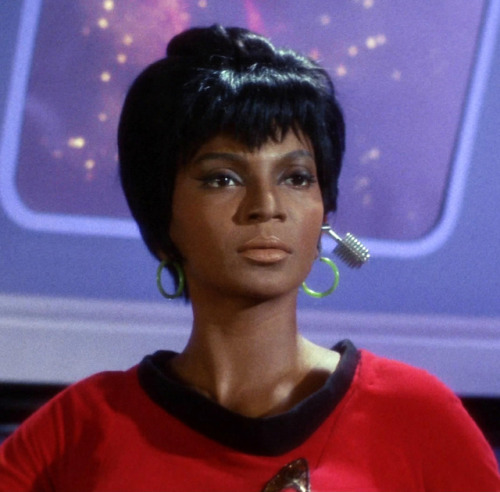
The story of Nichelle Nichols and Dr. Martin Luther King Jr.
“Actress Nichelle Nichols who made television history in the 1960s with her portrayal of “Star Trek” character Lieutenant Nyota Uhura – a breakthrough role that showed an African American woman in a position of power as the fourth in command of a starship. At the end of the first season, however, Nichols was frustrated by the show’s development and considering a move back to Broadway until she met a very special fan who convinced her how important her role on the show was – Dr. Martin Luther King, Jr.
After Nichols told Star Trek creator Gene Roddenberry that she was leaving the show, he encouraged her to think it over. That weekend, she attended a fundraiser for the NAACP and met King who told her he was a “Trekkie” and “Lieutenant Uhura’s most ardent fan.” As Nichols described in an interview with the Huffington Post, when King learned that she was leaving, he urged her to stay, stating: “‘Don’t you realize how important your presence, your character is? This is not a black role or a female role. You have the first nonstereotypical role on television. You have broken ground’… ‘Here we are marching, and there you are projecting where we’re going. You cannot leave [the show]. Don’t you understand what you mean?’ I told him that when I would go on hiatus from the show, I could come and march with him and he said, ‘No! You’re an image for us. We look on that screen and we know where we’re going.’ It was like he was saying, ‘Free at last, free at last!’” Nichols did stay on the show with its entire run and went on to make history again in 1968 as part of the first scripted interracial kiss on TV with William Shatner, who played the show’s lead character, Captain James T. Kirk. Nichols’ groundbreaking character had a huge cultural influence, especially as a role model for many African American girls. Mae Jemison, the first African American woman in space, has cited her as an important influence and even used Uhura’s signature line “Hailing frequencies open” during the course of her duties on the space shuttle.”
Source
How Martin Luther King Jr. convinced ‘Star Trek’s’ Lt. Uhura to stay on the show

A Historical Deep Dive into the Founders of Black Womanism & Modern Feminism
Six African American Suffragettes Mainstream History Tried to Forget
These amazing Black American women each advanced the principles of modern feminism and Black womanism by insisting on an intersectional approach to activism. They understood that the struggles of race and gender were intertwined, and that the liberation of Black women was essential. Their writings, speeches, and actions have continued to inspire movements addressing systemic inequities, while affirming the voices of marginalized women who have shaped society. Through their amazing work, they have expanded the scope of womanism and intersectional feminism to include racial justice, making it more inclusive and transformative.
Anna Julia Cooper (1858–1964)
Quote: “The cause of freedom is not the cause of a race or a sect, a party or a class—it is the cause of humankind, the very birthright of humanity.”
Contribution: Anna Julia Cooper was an educator, scholar, and advocate for Black women’s empowerment. Her book A Voice from the South by a Black Woman of the South (1892) is one of the earliest articulations of Black feminist thought. She emphasized the intellectual and cultural contributions of Black women and argued that their liberation was essential to societal progress. Cooper believed education was the key to uplifting African Americans and worked tirelessly to improve opportunities for women and girls, including founding organizations for Black women’s higher education. Her work challenged both racism and sexism, laying the intellectual foundation for modern Black womanism.
Frances Ellen Watkins Harper (1825–1911)
Quote: “We are all bound together in one great bundle of humanity, and society cannot trample on the weakest and feeblest of its members without receiving the curse in its own soul.”
Contribution: Frances Ellen Watkins Harper was a poet, author, and orator whose work intertwined abolitionism, suffrage, and temperance advocacy. A prominent member of the American Equal Rights Association, she fought for universal suffrage, arguing that Black women’s voices were crucial in shaping a just society. Her 1866 speech at the National Woman’s Rights Convention emphasized the need for solidarity among marginalized groups, highlighting the racial disparities within the feminist movement. Harper’s writings, including her novel Iola Leroy, offered early depictions of Black womanhood and resilience, paving the way for Black feminist literature and thought.
Ida B. Wells (1862–1931)
Quote: “The way to right wrongs is to turn the light of truth upon them.”
Contribution: Ida B. Wells was a fearless journalist, educator, and anti-lynching activist who co-founded the National Association for the Advancement of Colored People (NAACP). Her investigative reporting exposed the widespread violence and racism faced by African Americans, particularly lynchings. As a suffragette, Wells insisted on addressing the intersection of race and gender in the fight for women’s voting rights. At the 1913 Women’s Suffrage Parade in Washington, D.C., she famously defied instructions to march in a segregated section and joined the Illinois delegation at the front, demanding recognition for Black women in the feminist movement. Her activism laid the groundwork for modern feminisms inclusion of intersectionality, emphasizing the dual oppressions faced by Black women.
Sojourner Truth (1797–1883)
Quote: “Ain’t I a Woman?”
Contribution: Born into slavery, Sojourner Truth became a powerful voice for abolition, women's rights, and racial justice after gaining her freedom. Her famous 1851 speech, "Ain’t I a Woman?" delivered at a women's rights convention in Akron, Ohio, directly challenged the exclusion of Black women from the feminist narrative. She highlighted the unique struggles of Black women, who faced both racism and sexism, calling out the hypocrisy of a movement that often-centered white women’s experiences. Truth’s legacy lies in her insistence on equality for all, inspiring future generations to confront the intersecting oppressions of race and gender in their advocacy.
Nanny Helen Burroughs (1879–1961)
Quote: “We specialize in the wholly impossible.”
Contribution: Nanny Helen Burroughs was an educator, activist, and founder of the National Training School for Women and Girls in Washington, D.C., which emphasized self-sufficiency and vocational training for African American women. She championed the "Three B's" of her educational philosophy: Bible, bath, and broom, advocating for spiritual, personal, and professional discipline. Burroughs was also a leader in the Women's Convention Auxiliary of the National Baptist Convention, where she pushed for the inclusion of women's voices in church leadership. Her dedication to empowering Black women as agents of social change influenced both the feminist and civil rights movements, promoting a vision of racial and gender equality.
Elizabeth Piper Ensley (1847–1919)
Quote: “The ballot in the hands of a woman means power added to influence.”
Contribution: Elizabeth Piper Ensley was a suffragist and civil rights activist who played a pivotal role in securing women’s suffrage in Colorado in 1893, making it one of the first states to grant women the vote. As a Black woman operating in the predominantly white suffrage movement, Ensley worked to bridge racial and class divides, emphasizing the importance of political power for marginalized groups. She was an active member of the Colorado Non-Partisan Equal Suffrage Association and focused on voter education to ensure that women, especially women of color, could fully participate in the democratic process. Ensley’s legacy highlights the importance of coalition-building in achieving systemic change.
To honor these pioneers, we must continue to amplify Black women's voices, prioritizing intersectionality, and combat systemic inequalities in race, gender, and class.
Modern black womanism and feminist activism can expand upon these little-known founders of woman's rights by continuously working on an addressing the disparities in education, healthcare, and economic opportunities for marginalized communities. Supporting Black Woman-led organizations, fostering inclusive black femme leadership, and embracing allyship will always be vital.
Additionally, when we continuously elevate their contributions in social media or multi-media art through various platforms, and academic curriculum we ensure their legacies continuously inspire future generations. By integrating their principles into feminism and advocating for collective liberation, women and feminine allies can continue their fight for justice, equity, and feminine empowerment, hand forging a society, by blood, sweat, bones and tears where all women can thrive, free from oppression.

Barbados Heritage District, honoring memory, land and spirit. Designed by world-renowned architect Sir David Adjaye. It will be built next to Newton Slave Burial Ground, the oldest and largest slave cemetery ever found in Barbados. The site will include a memorial, a museum, a global research center, and spaces for performances and reflection.It’s part of a national project called ROAD (Reclaiming Our Atlantic Destiny), which aims to reshape Barbados’identity and economy by making it a central place for learning about Atlantic slavery, from the Caribbean, not just from the West. Barbados actually holds the second largest collection of slave records after the UK. One key part of the project is to digitize these archives and give access to researchers, families, and future generations. But not everything has gone smoothly. Some activists, spiritual leaders, and museum workers protested the construction, saying it disrespected the sacred nature of the burial ground.Now, discussions are ongoing to create cultural and spiritual guidelines.There’s also talk of founding a spiritual university, in collaboration with Codrington College, to show how different faiths and traditions can live together. The Newton Burial Ground itself is powerful: about 1,000 enslaved people were buried there, between 1660 and 1820.They were laid to rest by their families and communities, often with rituals inspired by African traditions.It’s the only untouched slave cemetery ever excavated in the Caribbean.The artefacts and human remains found here tell us stories we couldn’t get from written documents alone. This project has the potential to transform how we understand slavery, heritage and identity. It also reminds us that healing history must include respect, spirit and the voices of the people.
Wake up people

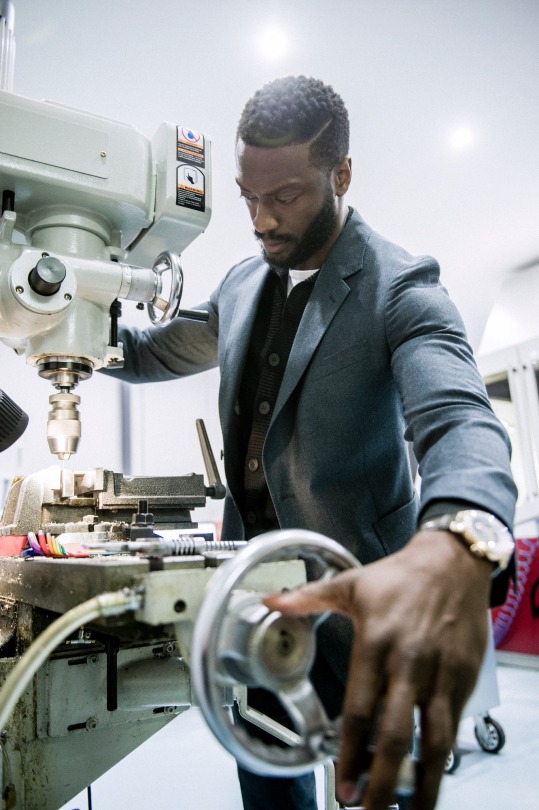





“First season of LEVERAGE - so he's 21 years old - he shows me his watch designs. I'm expecting, y' know, celebrity strap branding or faces. No, it's engineering schematics of GEARS and shit. Pages of them. Even then, there were none so cool.” - John Rogers


WATCH!: THE ORIGINAL STATUE OF LIBERTY WAS A BLACK WOMAN?
Did you know the Original Statue of Liberty presented to the U.S. was a Statue of a… “Black Woman”. There is a lot of history that didn’t make it into the history books for our schools. READ, get you a book and educate yourself.

A History Lesson It is hard to believe that after my many years of schooling secondary and post) the following facts about the Statue of Liberty was never taught. Hundreds of thousands if not millions of people including myself have visited the Statue of Liberty over the years but yet I’m unable to find one person who knows the true history behind the Statue- amazing. Yes,amazing that so much important Black history (such as this) is hidden from us (Black and White). What makes this even worse is the fact that the current twist on history perpetuates and promotes white supremacy at the expense of Black Pride.
During my visit to France I saw the original Statue of Liberty. However there was a difference, the statue in France is Black. The Statue of Liberty was originally a Black woman, but, as memory serves, it was because the model was Black.
In a book called “The Journey of The Songhai People“, according to Dr. Jim Haskins, a member of the National Education Advisory Committee of the Liberty-Ellis Island Committee,professor of English at the University of Florida, and prolific Black author, points out that what stimulated the original idea for that 151 foot statue in the harbor.
He says that what stimulated the idea for the creation of the statue initially was the part that Black soldiers played in the ending of Black African Bondage in the United States. It was created in the mind of the French historian Edourd de Laboulaye, chairman of the French Anti-Slavery Society, who, together with sculptor Frederic Auguste Bartholdi,proposed to the French government that the people of France present to the people of the United States through the American Abolitionist Society, the gift of a Statue of Liberty in recognition of the fact that Black soldiers won the Civil War in the United States.
It was widely known then that it was Black soldiers who played the pivotal role in winning the war, and this gift would be a tribute to their prowess. Suzanne Nakasian, director of the Statue of Liberty, Ellis Island Foundations’ National Ethnic Campaign said that the Black Americans’ direct connection to Lady Liberty is unknown to the majority of Americans,BLACK or WHITE.
When the statue was presented to the U.S. Minister to France in 1884, it is said that he remonstrated that the dominant view of the broken hackles would be offensive to a U.S. South, because since the statue was a reminder of Blacks winning their freedom. It was a reminder to a beaten South of the ones who caused their defeat, their despised former captives.
Documents of Proof:
1.) You may go and see the original model of the Statue of Liberty, with the broken chains at her feet and in her left hand. Go to the Museum of the City of NY, Fifth Avenue and 103rd Street write to Peter Simmons and he can send you some documentation.
2.) Check with the N.Y. Times magazine, part II_May 18, 1986. Read the article by Laboulaye.
3.) The dark original face of the Statue of Liberty can be seen in the N.Y. Post, June 17, 1986, also the Post stated the reason for the broken chains at her feet.
4.) Finally, you may check with the French Mission or the French Embassy at the U.N. or in Washington, D.C. and ask for some original French material on the Statue of Liberty, including the Bartholdi original model. — with Edwin Cobb, Gemini Hodge and Deverick Murray.
Source: http://bit.ly/ahsjdd
The post WATCH!: THE ORIGINAL STATUE OF LIBERTY WAS A BLACK WOMAN? appeared first on NosyTalk.
from WordPress https://nosytalk.com/watch-video-the-original-statue-of-liberty-was-a-black-woman/?utm_source=rss&utm_medium=rss&utm_campaign=watch-video-the-original-statue-of-liberty-was-a-black-woman
Remembering the great activist & artist, Valerie Maynard (1937 - 2022)


“No Apartheid Anywhere” (1995)




In 2017, American film researchers recovered “Something Good – Negro Kiss,” a short film depicting a playful kiss between a Black couple which had not seen the light of day for more than a century. A long-forgotten artifact from the earliest years of American film, the sweet, humanizing vignette, produced by the Selig Polyscope Company, makes a startling contrast to the overwhelmingly racist and blackface-ridden contempory portrayals of African Americans. Four years later in 2021, archivists in Norway, halfway across the world, identified a sister short in their collections—an extended alternate cut which reveals more of Chicago stage performers Gertie Brown and Saint Suttle’s vaudeville-like routine, a theatrical, hot-and-cold romantic dynamic between two lovers which parodies the popular and controversial short “The Kiss” (1896). Both films, which had previously been lost, were known from entries in old motion picture catalogs but had been assumed to be era-typical, anti-Black “race films” until their rediscovery in the 21st century. Together with its more famous sibling, which has since been inducted into the Library of Congress’ National Film Registry, this alternate version of “Something Good” represents the first-known instance of Black intimacy ever captured on-screen.
SOMETHING GOOD [Alternate Version] (1898) Directed by William Selig
Black women are the backbone of our society and not enough people realize
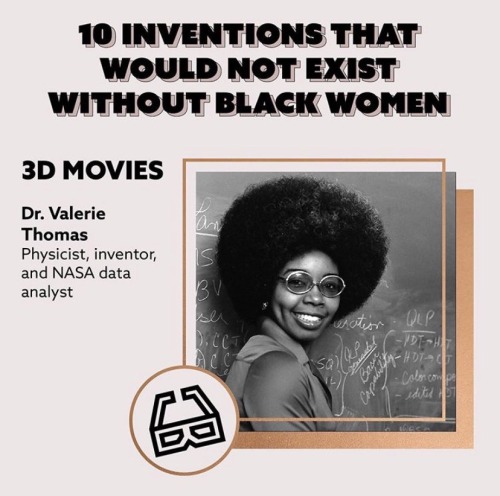
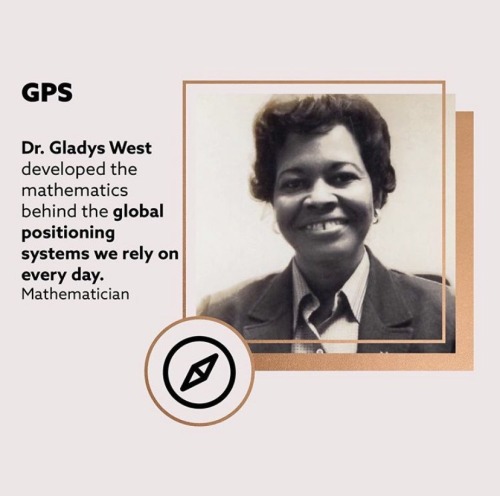
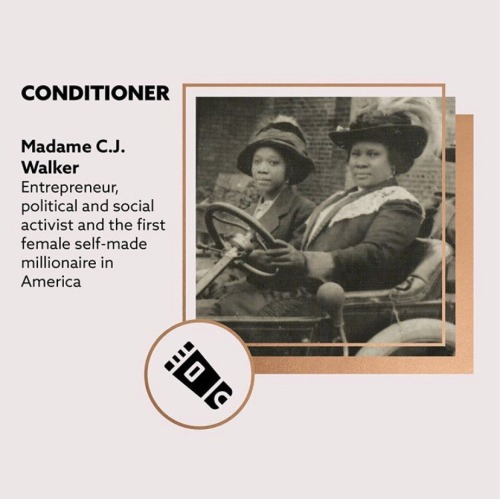
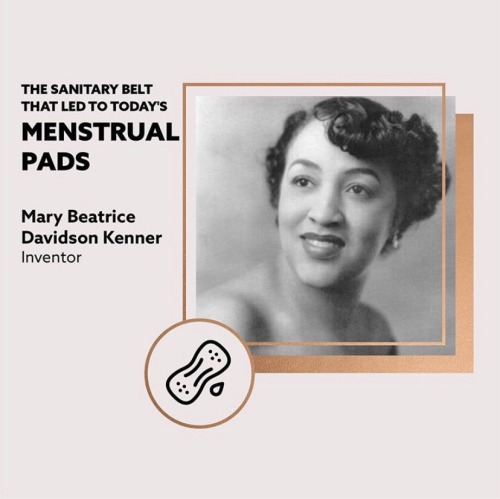
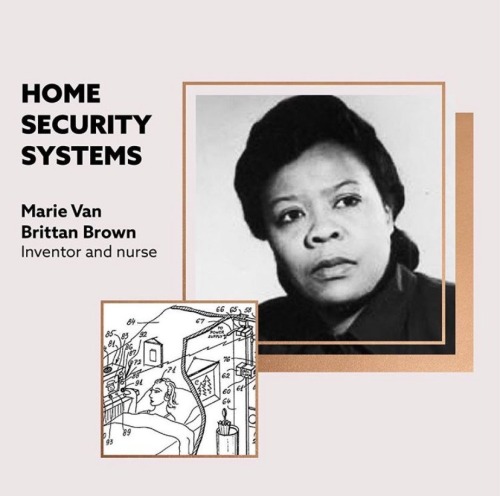
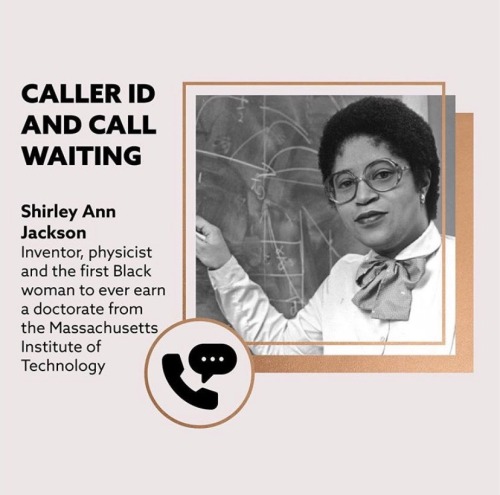

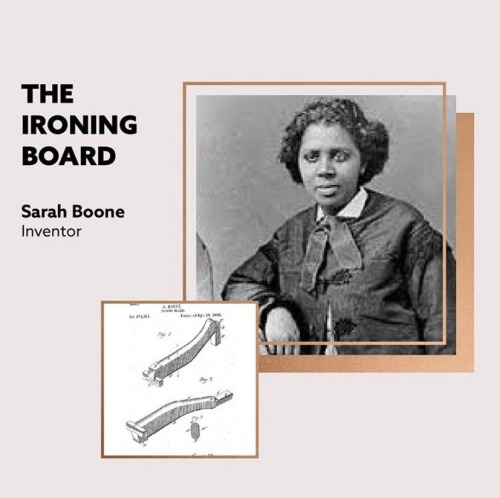
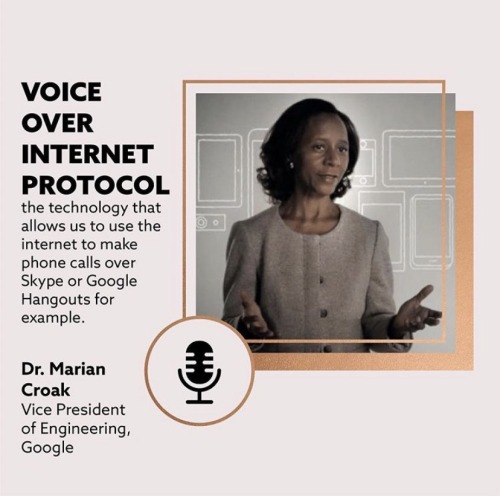

Black women are the backbone of our society and not enough people realize










I laughed when I saw who posted that. I wonder how many times he has broken the law. Literally. Outright.

Slaves who escaped were breaking the law. Literally. Outright.
Jewish people who escaped the Nazis were breaking the law. Literally. Outright.
The law is a horrible judge of morality.